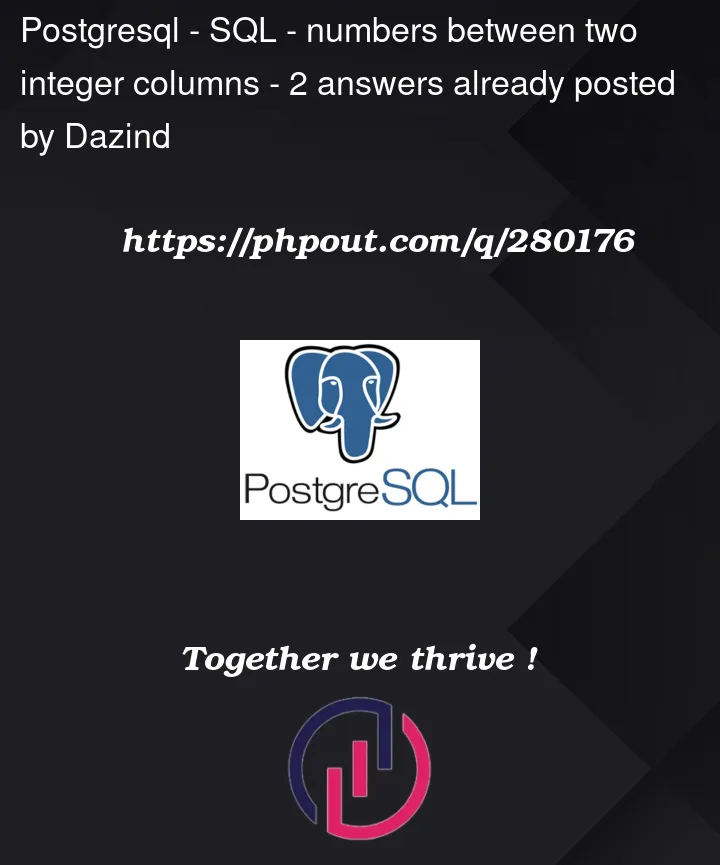I’m trying to figure out a way to list all numbers between two columns (INT) and join them in a third column where all numbers are seperated.
Eg.
| Column A | Column B | Column C |
|---|---|---|
| 100 | 105 | 100;101;102;103;104;105 |
| 10 | 14 | 10;11;12;13;14 |
Does anyone have a solotion for this?
Have googled around but didnt find any exact match




2
Answers
Use the
generate_serieswhich is a function to generate a series of numbers between two values. with the help ofstring_aggfunction to concatenate these numbers into a single string, separated by semicolons:dbfiddle DEMO
Set-returning
generate_series()does just that: demoString_agg()does what you want butarray_agg()orjsonb_agg()are preferable because they maintain the adequate type and allow you to subscript the resulting array.In AWS Redshift flavour of PostgreSQL,
generate_series()isn’t supported, which is why you’d have to use a recursive cte mentioned by @jarlh:Which works in regular PostgreSQL as well.